Kokutsu-dachi is another stance primarily used in the Shotokan katas. Often described as the opposite of Zenkutsu-dachi (Forward Stance), Kokustu-dachi is effective as a defensive stance, when it's often coupled with Shuto Uke (Knife-hand Block), as in kata Bassai Dai, and in that combination it's perhaps the most classical karate-looking posture of them all.
However, the stance can also be used offensively, delivering strong blocks or angular attacks to the neck and arms. It can also be used in grappling situations as the basis for sweeps and throws.
Kokutsu-dachi offers an easy transition to Nekoashi-dachi (Cat Stance), providing fast access to a range of forward kicks.
Technique:
| # | Description |
|---|---|
| 1. | The key element of this stance is the fact that your centre of gravity should be set quite far back. Your rear leg supports approximately two-thirds (66%) of your weight, whilst the front leg supports the remainder. |
| 2. | The back leg should be quite bent at the knee and the back foot should face outwards at a right-angle to the front. |
| 3. | The front leg should be slightly bent and the front foot should face directly to the front. It should be two shoulder-widths forward of the rear foot, and a line drawn from the back of the rear heel would touch the inside of the front foot. |
| 4. | Your back should be naturally straight and your body-line should be slightly forwards of your rear leg. |
| 5. | Many stances require you to turn your hips as you strike, block or kick, but Kokutsu Dachi is unusual because it's one of few where the hips should be set at 45 degrees to the front in its relaxed position. |
| 6. | Students commonly get this stance wrong by lowering the body too far. This bends the rear leg further, thus forcing out the rear knee, which quickly induces pain and cramps. |
Common mistakes to avoid:
- Don't allow the back knee to collapse forwards.
- Don't lean back.
- Your hips should face 45 degrees not 90.
- Your front knee should be bent.
- Don't let the toes of your back foot face backwards.
- Keep your back elbow out at 45 degrees to the front if using a shuto guard.
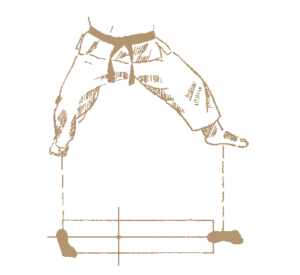
Kokutsu-dachi position.
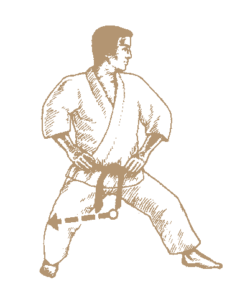
Knees strongly obtuse along the extension of the line.
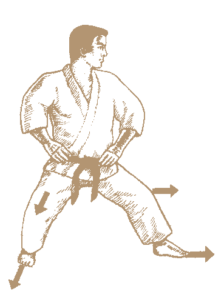
The knees and toes of each foot must point in the same direction.
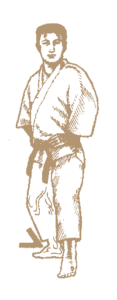
Knee and ankle joints must be sufficiently bent and strongly locked.
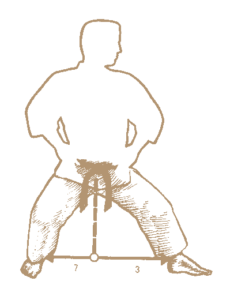
Weight distribution in leg posture should be 70% to 30%.
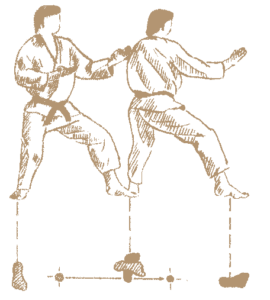
Moving in the position of kokutsu-dachi.
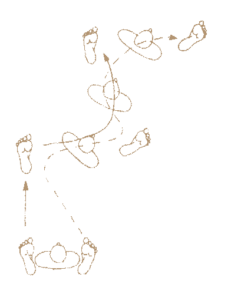
The basic step of floating the transition in kokutsu-dachi.
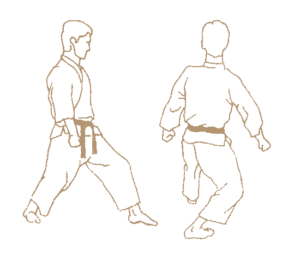
View of the kokutsu-dachi posture.
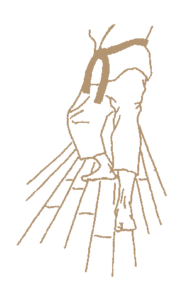
View on the attitude of kokutsu-dachi.
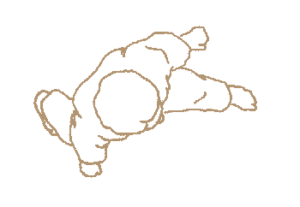
Top view on the attitude of kokutsu-dachi.
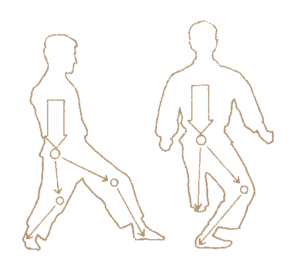
Distribution of gravity in the position of kokutsu-dachi.






